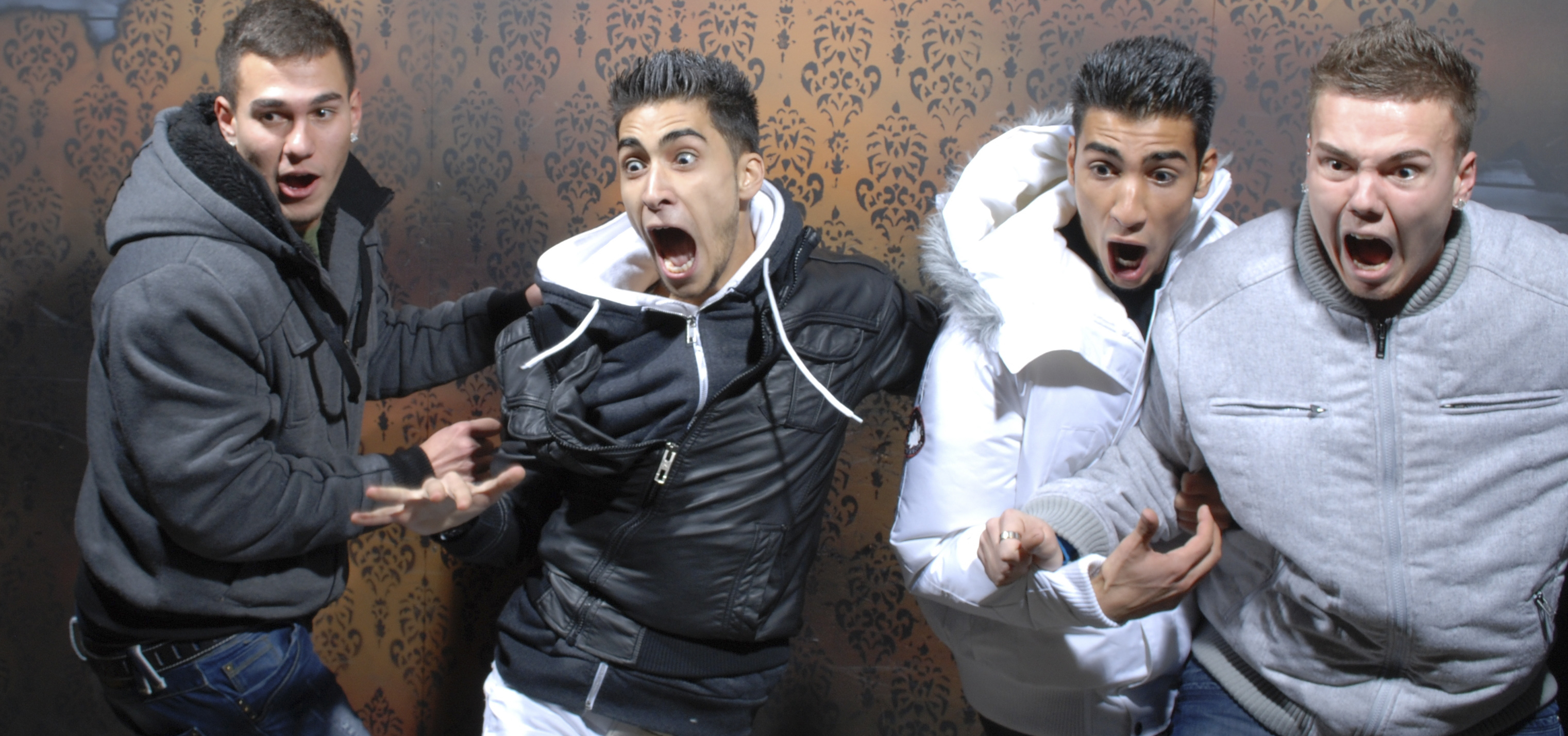Fear factor
Voodoo, amygdalae and death: A Halloween Q&A with professor Don Katz
 Courtesy of Nightmares Fear Factory
Courtesy of Nightmares Fear Factory Visitors of the Nightmares Fear Factory in Niagara Falls, Canada
Don Katz, professor of psychology, knows what the brain doesn’t like. His primary research focuses on taste and how the brain identifies and responds to bad tastes. The regions of the brain that deal with taste aversion — the amygdala and cortex — also process and respond to fear. With Halloween approaching, BrandeisNOW spoke with Katz about how the brain processes fear — potentially with deadly consequences.
We all know what it feels like to be afraid — the racing heart, the tense muscles — but what is happening in the brain? Say you’re walking through a haunted house. Dreary and distorted music plays ominously. You hear a whisper in the darkness. Something brushes your cheek. Then, out of nowhere, a man in a white mask jumps in front of you, screaming and brandishing a bloody knife.
What happens in the brain at that exact moment?
First, information about what you’ve just seen is carried from the visual cortex to the amygdala, the part of the brain that processes emotional reactions. Humans are imbued with an instinctive, negative reaction to loud noises and sudden looming movement, so your brain interprets this stimulus as a bad thing. Next, your neurons start firing like crazy. The amygdala tells the cortex how to respond — fight or flee — and the cortex passes this message onto the peripheral nervous system.
Your extremities start to tingle, you start to sweat, your heart rate increases, your muscles tense. This fight or flight reaction is mobilized by the sympathetic nervous system. Like every system, this one, is homeostatic: It has an equal and opposing reaction. So, while the sympathetic nervous system tells the body to go, go, go, the parasympathetic nervous system wants to slow everything back down. The sympathetic system tells your heart rate to increase; the parasympathetic tells your heart rate to decrease. Here’s the scary part: The harder you push the sympathetic nervous system — the more frightened you are — the harder it pushes the parasympathetic system. You can conceivably push your fear reaction so hard that it drives the parasympathetic system to stop your heart. It’s known as a voodoo death.
You can actually be scared to death?
Not from fear but you can, conceivably, die from your reaction to fear.
Why is it called “voodoo death?”
There are voodoo folktales of people so afraid that the Obeah Man [an evil trickster] was going to get them, they died.
Okay, so assuming you don’t push your sympathetic system too hard, what happens after that initial scare?
Now, the amygdala is all amped up. For the next few minutes, your body will remain hyper-responsive to other stimuli. Have you ever been scared by something, then someone taps you on the shoulder and you jump about a foot in the air? That’s your hyper-responsive amygdala in action. You’ll calm down eventually, especially if you go somewhere quiet.
What does all this have to do with your research involving taste aversion?
Well, fear and disgust are very closely related (physiologically). When a taste hits your tongue, the amygdala decides in milliseconds whether or not it’s good, and sends that information to the cortex. The same systems that learn fear also learn good and bad taste associations. For example, if you develop a fear of spiders, the amygdala will process the sight of spiders as a threat and kick off the flight or fight reaction. If you drink too much tequila one night and get sick, the amygdala will process the smell and taste of tequila as a negative, and change how you taste tequila.
Any suggestions for Brandeisians looking for a good scare this year?
If you really want to scare your Brandeis classmates, tell them that they didn’t get into med school.
Categories: Research, Science and Technology





